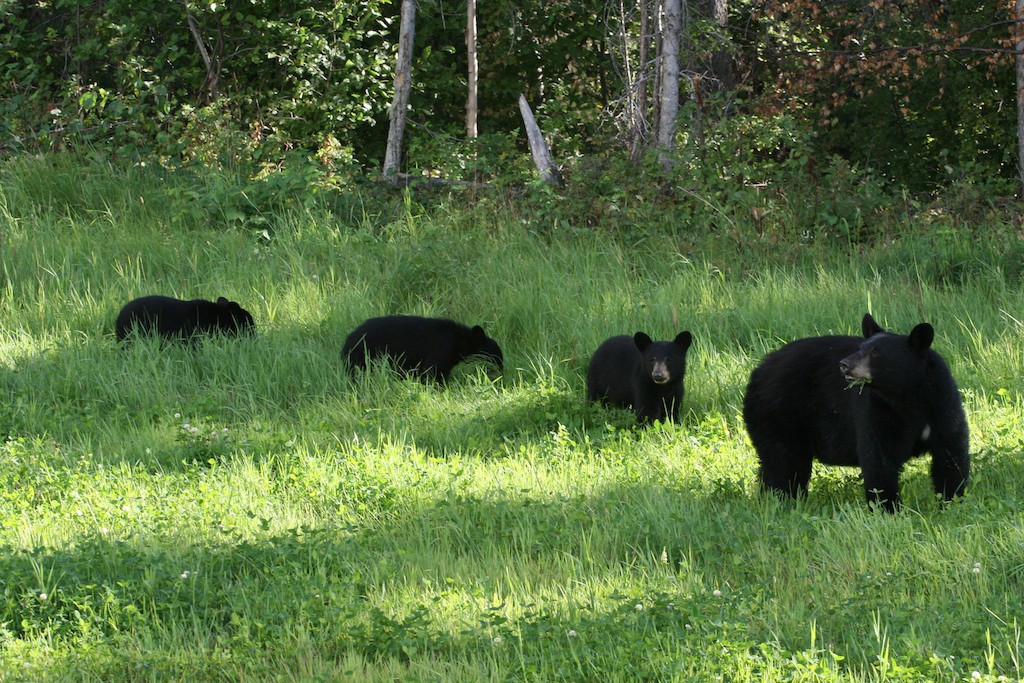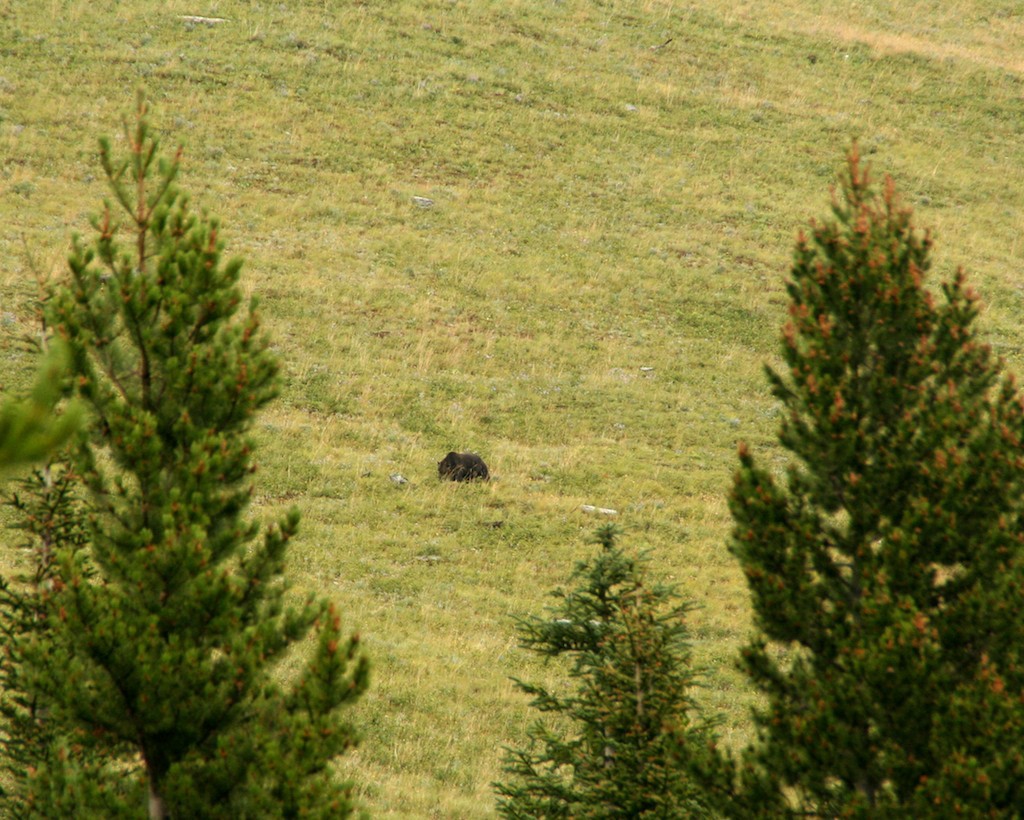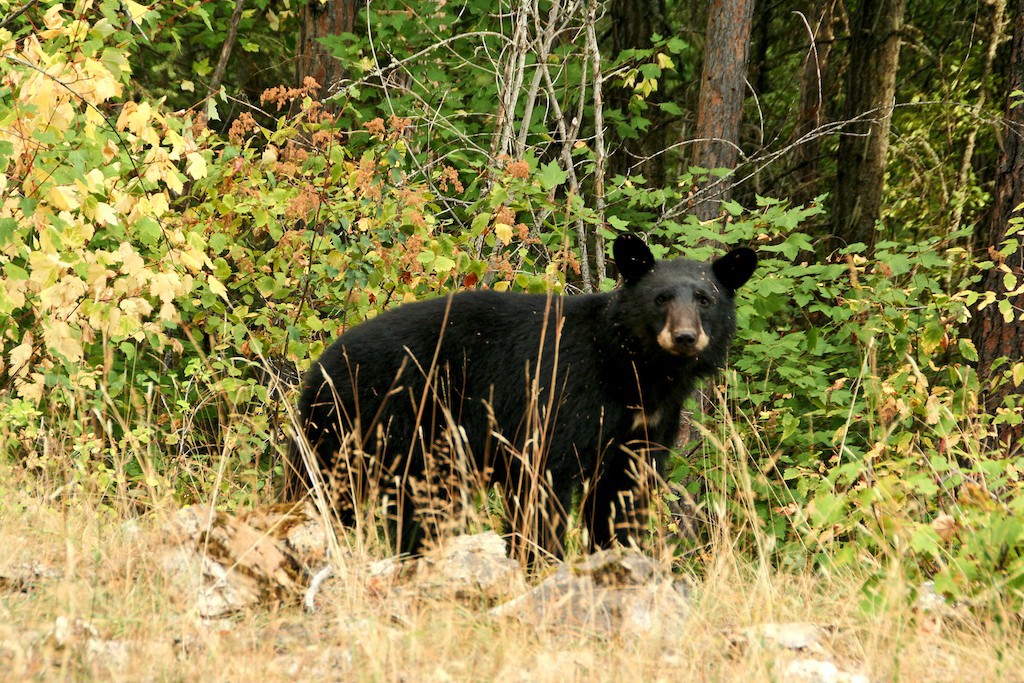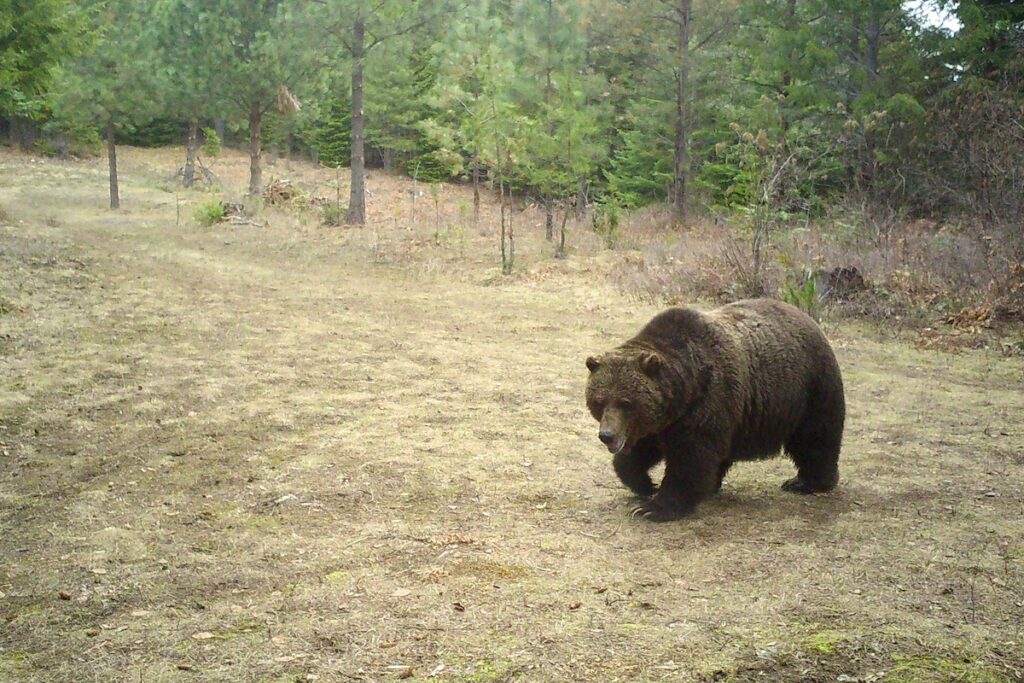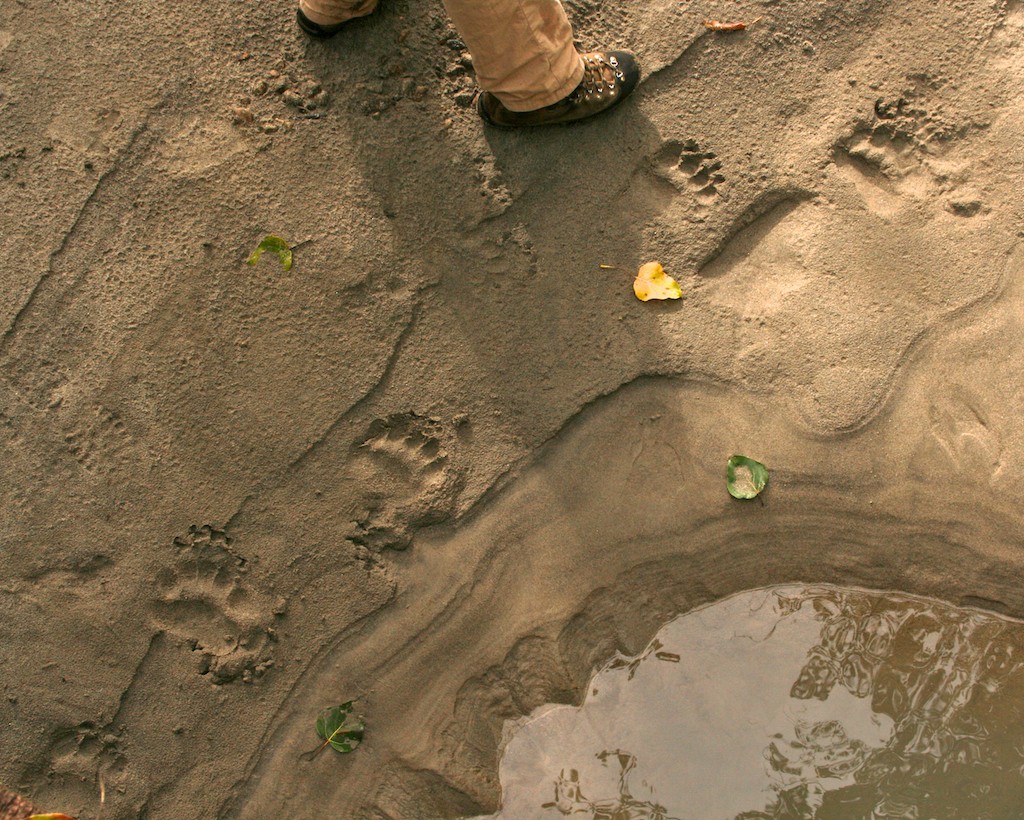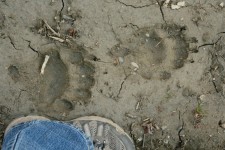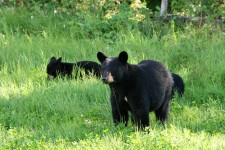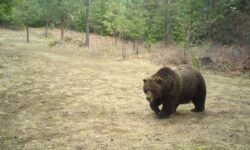After spotting a bear in the basin below Goat Mountain on the State Line, I pulled out my binoculars to take a closer look. Even though the bear was black, I couldn’t assume it was a black bear since grizzly bears can be black and this is both grizzly and black bear country. I tried to glimpse a profile view of its face, shoulders and ears as it wandered through the trees. These physical characteristics are the best means of identifying a grizzly bear versus a black bear from a distance.
Grizzly bear versus Black bear
Face
A black bear has a long, straight profile from its forehead to nose tip while a grizzly bear has a concave or dish-shaped profile from between its eyes to the end of its nose. These facial characteristics make a black bear’s face appear round and a grizzly bear’s face appear broad.
Shoulders
When looking at the shoulders, grizzly bears have a distinctive shoulder hump created by their massive shoulder muscles used for digging. The shoulder hump is the highest point on a grizzly bear when it is standing on all fours. Black bears lack a shoulder hump so their highest point while on all fours is either their rump or middle of their back.
Ears
If the bear is closer, another identifying characteristic are the ears. Grizzly bears have smaller, rounder ears while black bears have larger, longer, more pointed ears.
Claws and Tracks
If the bear is extremely close, take a look at the claws. A black bear’s short (less than two inches long), sharply-curved claws help them tear into rotten logs in search of insects and climb trees to escape predators. While the longer (two- to four- inches), gently-curved claws of a grizzly bear are better adapted for digging roots and excavating winter dens. Despite the differences, black bears still dig and grizzly bears can climb trees.
The claws can also be helpful in identifying the tracks of both bears. Since the grizzly bear’s claws are longer, the claw marks will be farther away from the toe marks than the black bear’s short claws.
Another difference in the tracks is the relation of the toes to the pad. When a straight edge is aligned with the front of the pad and the rear of an outside toe on either side of the front track, a grizzly bear’s toes will all be in front of the straight edge, whereas the opposite outside toe on a black bear’s track will be partially behind the straight edge. This technique only works on the front track which is smaller and more square than the rear track.
Color
The main thing to remember when trying to determine a black bear from a grizzly bear is to not identify the bear based on color. Even though they are called black bears, they can also be brown, cinnamon, blonde or a combination of light and dark colors. Likewise, not all grizzly bears are brown, they can range from black to blonde and even white (such as the spirit bears in western British Columbia).
The bear below Goat Mountain wandered into a meadow long enough for me to see the straight face and lack of a shoulder hump, which confirmed that this black-colored bear was indeed a black bear.
Check out the Greater Yellowstone Coalition for more information and photos on the difference between grizzly bears and black bears.
Check your identification skills with this Grizzly Bear versus Black Bear quiz by the Wyoming Game and Fish Department.

